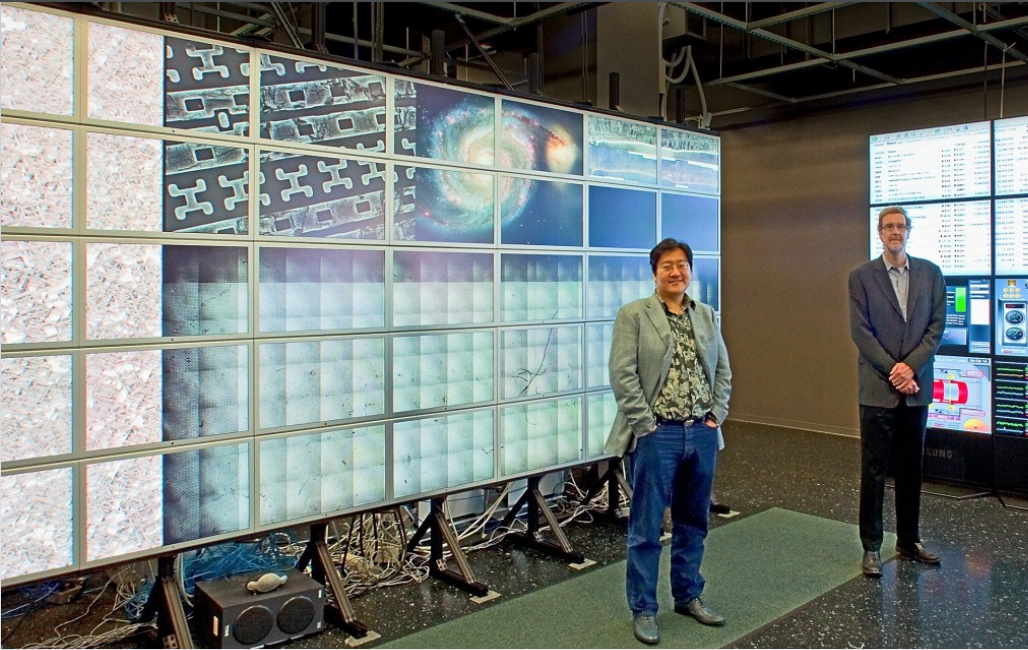Hiperwall started as a research project at UC Irvine to build the world’s highest resolution (at the time) tiled display wall, more commonly known as a video wall. It was built to enable scientific visualization on an unprecedented scale, and we regularly showed imagery and data sets that measured hundreds of millions of pixels and gigabytes of data. From the start, we designed the system to be highly interactive and flexible, and we used parallel and distributed computing techniques to provide the high-performance visualization required to drive a 200 million pixel display system. Therefore, the name Hiperwall is an acronym of Highly Interactive Parallelized display Wall (yes, liberties were taken for the sake of readability).
At the time, we capitalized the name as HIPerWall, and we highlighted the IP in the name for two reasons. We used industry-standard Internet Protocol (IP) as the basis for our distributed computing infrastructure. We were also loosely affiliated with the OptIPuter project led by Prof. Larry Smarr of UCSD. Note that the IP in OptIPuter is also capitalized, because it was an IP-based worldwide distributed computing research project.
The Hiperwall name was chosen because we valued user interactivity and built the software to be highly interactive with very powerful rendering capability. This is easily visible in the video below that shows how smoothly and easily a Hiperwall system can zoom in on a 2 billion pixel image (rendered from a video game, Witcher 3).
How valuable is this interactivity to our customers? Many of our customers design their content using our interactive interface, but then they save that layout (we call it an Environment), so they do not use our highly interactive features on a daily basis. Where interactivity becomes essential is when a crisis arises or new information from a new source needs to be displayed urgently. Because our software is designed for easy interactivity, a system operator can quickly place the new source or image anywhere on the wall and even replicate it to multiple walls. Because of the interactive design features built into Hiperwall software, the ability to manipulate content quickly and easily is ready when our customers need it.





